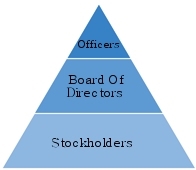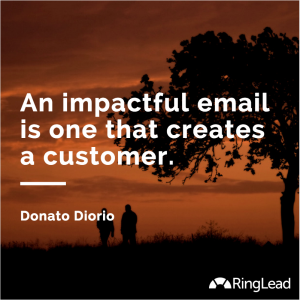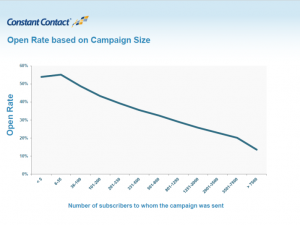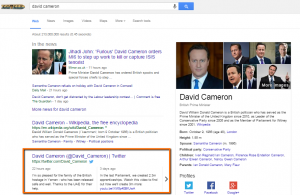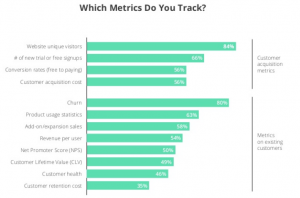I absolutely love crafting and sharing blog posts. The power of the written word to inspire and engage is simply unmatched by nearly anything (aside from my other passion, musical performance). To get it right, you need to pick good blog titles that will drive clicks and views.
As alluded to in a previous post, I spend a great deal of time with content curation. That requires a ton of reading and filtering, because it matters to me that I am adding value whenever possible.
During the content curation process, I get to review hundreds of blog and article titles in a given week. After working on curation for a number of years, I’ve come to judge the “book by its cover” – i.e. the content by its title. And I’m not alone. With the overwhelming volume of content being pushed out on websites today, everyone has had to get better at guessing what is and is not worthy of their time.
This spans beyond the piece of content itself. The blog titles are typically shared, bookmarked, tweeted, or otherwise distributed as the main descriptors of the associated content. Since social shares have become a critical traffic driver for most websites, blog titles are of utmost importance.
8 Ways to Mess Up With Blog Titles
There are ample ways to err when building blog titles. But given some trends I’ve observed lately, I thought I’d share my take on what the most commonly used, and ineffective tactics are these days.
Fill Them With Puffery
Ah, the bane of the English major’s world: Puffery.
I get it. With an overwhelming volume of content out there, you have to break through the noise somehow. And if the post is about fashion or sports, maybe puffery might win you some eyeballs.
If you are blogging about any serious topic (e.g. politics, business), puffery will get you nowhere. Just try to read the following blog titles (derived from real blog posts I’ve seen, no citations shared out of respect for the authors) and see if they don’t make you at least a little bit nauseous:
- Top 10 Most Amazing Blog Posts Of 2013 That You Shouldn’t Miss
- The Secret to Absolutely Dominate [Insert Platform or Medium Here]
- 20 Ground-Breaking Tweets that Changed the World
- How to Drive Mountains of Traffic to Your Website With YouTube in 3 Minutes a Day
As you can tell, puffery is simply too much. Don’t go way over the top. It doesn’t work. Any serious reader wants to know that the content isn’t just “get rich quick” junk, so make the title appropriate to the audience.
Use Hashtags and Weird Characters
With social sharing becoming so important to content marketing, it makes sense to take into account what you might do to increase your reach on those platforms. One tactic I support fully is replacing your company name with your Twitter handle, or appending it to the end. This is great for earning additional followers when the material is tweeted. Assuming the handle is also the same as your brand itself (e.g. my company’s is @ReturnOnNow), it can serve as brand reinforcement as well.
Taking it one step further, it might be tempting to get cute with it. Maybe insert a hashtag (or five). Or use text message shorthand like “SMH.” I’ve even see posts that included random other characters for who knows what purposes (pop culture maybe?) – such as $ replacing S for example.
It’s annoying enough to see people go hashtag crazy in a status update or tweet. But when it’s part of a blog post title? WAY too much.
Regarding special characters, it’s important to understand what might happen when readers try to share your content. Special ASCII characters have HTML codes that help render them. When you use these characters in page titles, you open yourself up to the risk that shares will show the HTML code instead of the desired character!
Some examples of this would be the ampersand (“&”, or HTML code “&”) and the less than / greater than symbols (HTML codes “<” and “>”). You can see the full list of HTML codes for ASCII characters here.
Make your life easier – just use standard letters and words in your blog titles. That way you retain control of the message and the formatting for social shares.
Over Optimize the Keywords In It
Although SEO has moved away from hyper-optimized keyword targeting toward topics, it still makes sense to at least consider the keywords you want to target with your content. As an SEO by trade, I take time to consider what topics and keywords to target on a post-by-post basis.
Just know the limits. Even by old school SEO standards, every page and post should have one primary target keyword. It’s okay to have secondary keywords and even semantic variations (encouraged in fact). But you shouldn’t be cramming all of those keywords into the blog titles.
If you find yourself tweaking the blog titles to include multiple keywords, stop doing it. Not only are you possibly confusing the search engines about what the topic is, but you are also putting your visit volume at risk. Content curation provides value by way of associated thought leadership for the person sharing the content. If your post title is stuffed with keywords, you will be discouraging smart curators from sharing your content. Don’t shoot yourself in the foot before you even hit “Publish”!
Overlook Typos, Misspellings, and Grammar Faux Pas
If you want people to read your content, make absolutely sure to edit it before taking it live. Since the blog title serves as the display name for both organic ranking as well as social shares, it is the most important place to avoid errors.
This goes beyond just typical typographical errors. Run your work through a spell checker if you need to do so. Also run it through a grammar checker if you have one available (MS Word works fine for this with a simple cut and paste).
Can’t remember whether “i” goes before “e” in “weird”? Look it up.
Struggle to understand the differences between “your” and “you’re”? “They’re,” “their,” and “there”? “Insure” and “ensure”? These things drive readers crazy, so figure it out.
If you want to be a respected blogger or writer, the little things matter. Grammar, spelling, and typos are all little things to get right. An occasional error might be okay (outside the blog title), but do your best to avoid making it a habit. Or have someone else review to be double sure you are covered.
Leave Them Boring and Nondescript
On the other side of the argument, it’s important to keep in mind how important blog titles are for driving clicks and views. Posts with titles that completely fail to set expectations about the content are ineffective.
If you want to grab attention, make the post titles interesting. Make them intriguing. Make them controversial if you must. But never, ever allow them to be boring and nondescript. After all, why waste the time writing if you won’t put forth the effort to title the content in the most intriguing way possible?
Sans Puffery, of course.
Make Them Too Long
It shocks me to see blog post titles that run two, three, or even more lines down the page. This is a terrible idea for several reasons:
- The post title will show up in the SERPs, but will be cut off somewhere between the 55th and 70th character
- Shares on Twitter only allow up to maybe 120 characters when you consider the URL will take up the rest of the tweet, and you leave no room for old school RTs or added commentary during a retweet
- Multi-line headlines can push the real content down below the fold, where it may never be read at all
- It can come across as desperate and smarmy (“But wait, there’s more!”)
And really, what’s so important that you have to cram it into the blog title, rather than including in the body copy or subheads?
Make the blog titles snappy and worthy of attention, and get out. Some of my best performing blog titles have been between five and seven words in length. Set expectations, grab attention, and leave the rest to the post itself.
Or Worse, Incomplete…
When working to keep your blog titles shorter, be sure not to include only a half thought or incomplete subject. There’s a point where it will come across as pithy or unfocused.
Some examples that I’ve actually seen in the past couple of years:
- And Another Thing…
- It’s Just Not Right
- This Week
- Everyone Should Read This
- You’ve Got to Be Kidding Me!
Um, wow… I’m just DYING to figure out what those are about. It’s similar to putting out a vague status update on Facebook with no context, obviously fishing for attention. Most of us are just too busy to play those games. Tell me why to click!
Push Out Vague Click Bait
By now, we’ve all seen the stuff that Upworthy and similar sites publish. Facebook made a big issue of the vague click bait headlines by pushing them down in the news feed.
Upworthy has changed their strategy a bit and still shows up. Some of that may be due to their popularity and high engagement metrics, but some is definitely because they’ve pulled back on the click bait stuff.
I think we are all past tolerating click bait headlines like “You won’t believe what happened” and “What comes next will blow your mind.” And that’s a good thing. Don’t make the mistake of trying the same approach, because it simply doesn’t work any more.
The Biggest Offender: Bait and Switch
If you want to come across as insidious with your blog visitors, the easiest way to do so is the “Bait and Switch” approach. This is where you promise one thing in the blog post title, but deliver something completely different within the content itself.
This was an old internet marketing trick in the early days – rank for a topic with a lot of volume, and try to sell something else in the content. Not only is this a problem for reader trust, but it’s almost guaranteed to fail in the vast majority of cases.
I get why some less-ethical writers might do this. In too many cases, folks will retweet or share a blog post based on the title alone. That’s a bad idea – if you do it, stop! You’re putting yourself at risk of “guilt by association.” It’s not something you want to do to your own credibility.
Bottom line – make the blog post title relevant and descriptive about the content of the post itself. It’s far too risky to play games with setting expectations and completely failing to meet them. Any short term gains realized simply aren’t worth giving everyone a great excuse to completely tune you out.
Summary
Blogging requires a balance of creativity and follow through, and the blog post titles are a key piece of the puzzle. Avoid these nine gaffs, and you’ll be more likely to succeed in your content marketing efforts.
What other poorly crafted blog titles have you seen? Share them in the comments below.
Social Articles | Business 2 Community
(400)
